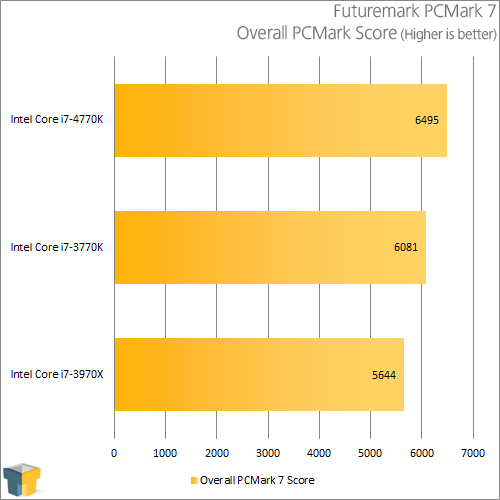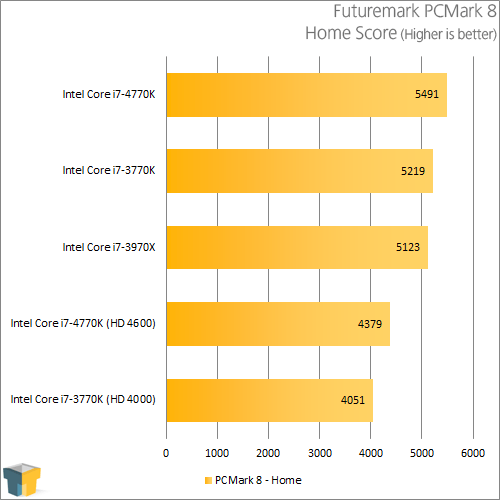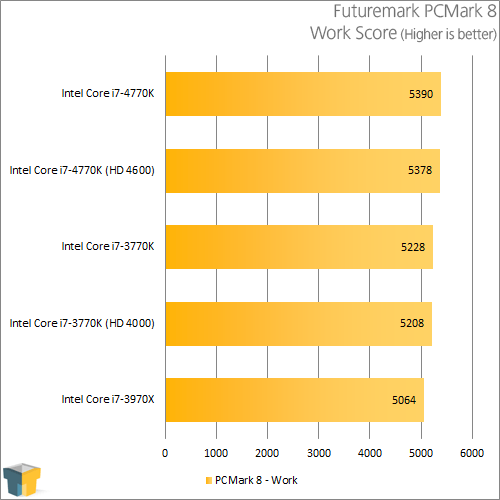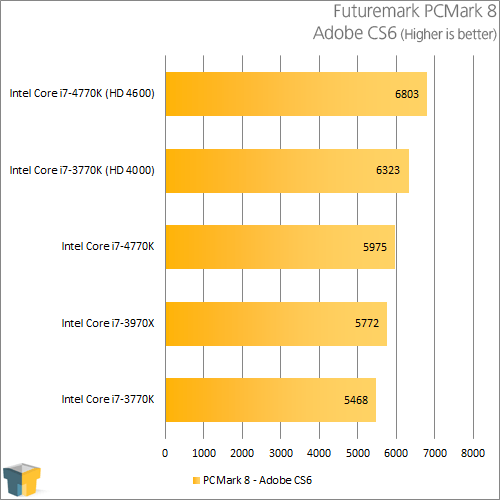- Qualcomm Launches Snapdragon 4 Gen 2 Mobile Platform
- AMD Launches Ryzen PRO 7000 Series Mobile & Desktop Platform
- Intel Launches Sleek Single-Slot Arc Pro A60 Workstation Graphics Card
- NVIDIA Announces Latest Ada Lovelace Additions: GeForce RTX 4060 Ti & RTX 4060
- Maxon Redshift With AMD Radeon GPU Rendering Support Now Available
Intel Core i7-4770K Quad-Core Processor Review

Intel’s latest processor architecture brings a lot to the table, with the usual suspects dominating the feature’s-list: improved CPU and GPU performance, better power-efficiency, and new instruction sets. We’re taking a look at the desktop line’s highest-end offering here, so let’s see how it stacks up against the last-gen’s champ.
Page 10 – System: Futuremark PCMark
Futuremark’s no stranger to most enthusiasts, as its benchmarking software has been considered a de facto standard for about as long as it’s been fun to benchmark. While its 3DMark software is undoubtedly the company’s most popular offering, PCMark is a great tool for summing up the performance of a PC with gaming being a minor focus rather than a major one.
Futuremark’s latest PCMark, 8, consists of five main test suites: Home, Creative, Work, Storage, and Applications. The goal of each is to show how a system will perform overall in a given scenario, and their titles sum up each respective goal nicely. The Applications suite consists of two sub-suites; one for Adobe’s Creative Suite (or Creative Cloud), and the other for Microsoft Office. Of all these suites, we run them all except for the Storage, as it’s not that relevant.
For fun, we also include the overall test results with PCMark 7 (just can’t bear to let it go!).






Things don’t look so good for the Core i7-3960X here. Despite boasting six cores, versus the 3770K + 4770K’s four, it only excels in a single test, and which one isn’t much of a surprise: Creative.
Prior to our testing here, we had no idea that Adobe’s Creative Suite took advantage of Intel’s QuickSync, but apparently it does. Using the IGP on either the 3770K or 4770K, the best performance can be seen – they even beat out NVIDIA’s GeForce GTX 660 Ti, which also helps accelerate select Adobe apps.
Overall, a great showing for the i7-4770K; it’s a clear winner among this trio of CPUs. It falls a bit short in the Creative test against the i7-3960X, but it comes close.
Support our efforts! With ad revenue at an all-time low for written websites, we're relying more than ever on reader support to help us continue putting so much effort into this type of content. You can support us by becoming a Patron, or by using our Amazon shopping affiliate links listed through our articles. Thanks for your support!






